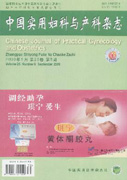Abstract: With significant change in contemporary obstetric population peculiarity and current obstetric interventions, the utility of traditional labor curve has been greatly challenged. In recent years, a series of labor studies have been reported by Zhang et al. Based on these contemporary data, several organizations have renewed labor curve. However, Zhang examined the labor patterns retrospectively according to labor data in the United States, so further research should be evaluated in Chinese women. Clinicians are now most concerned about how to predict and manage labor progression before the Chinese labor curve is confirmed.

